Commuters at London Liverpool Street are in for a shock. The latest store from Asian supermarket Oseyo will bring a technicolour world of tteokbokki rice cakes, preserved pickled mustard and viral hit Korean ice cups to a location more used to tedious railway station fare like Upper Crust baguettes and Tortilla’s claggy burritos.
The opening, slated for Q2, will be Oseyo’s fourth of five this year. It comes shortly after the announcement that fellow retailer Longdan has won approval to open the UK’s largest Asian supermarket on the site of a former Tesco Extra in Glasgow.
So, what’s behind the rise of the Asian supermarkets? Who are they catering to? And what are they doing to entice shoppers?
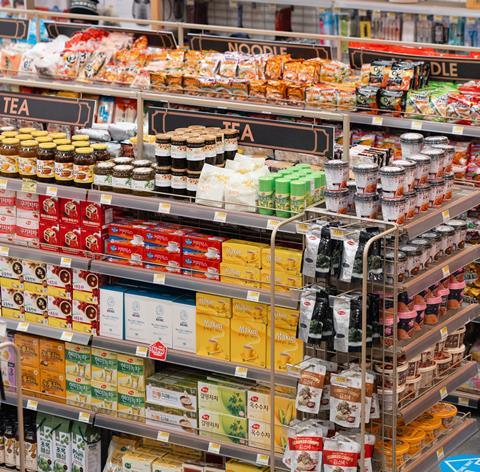
“We want to open in every major city in the UK – Birmingham, Manchester, Nottingham – and create a one-stop destination for all Asian goods,” says Longdan brand and marketing manager Oliver Huynh. Longdan currently has 13 supermarkets. The largest, in Maidstone, is 25,000 sq ft. That’s no small store, but it will be dwarfed by the Glasgow iteration, which comes in at about 110,000 sq ft and is slated to open in early 2026 ahead of Chinese New Year.
The project will be Longdan’s first outside the south east of England and Huynh says the plan is to create “an Asian mall” of sorts, with half the space given to retail selling everything from noodles and sauces to cookware and toiletries. The other half will be a food court with seating for 200 people and 20 food kiosks serving food from Vietnam, China, Korea, Japan and more.
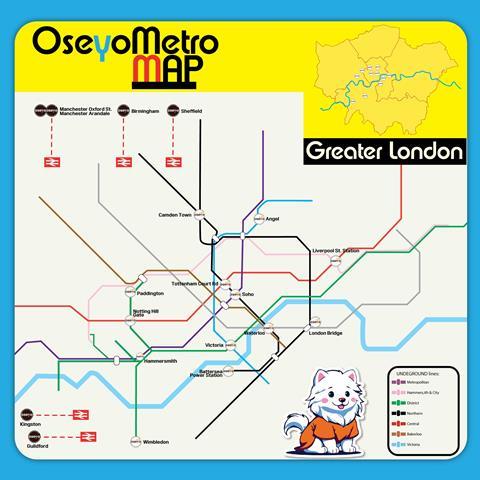
Oseyo also opened its largest store to date in July, when it took over the first floor of an H&M in Manchester’s Arndale Shopping Centre. The 12,500 sq ft store was not the retailer’s first in the city – it opened one on Oxford Road in 2019 – but that did not stop six-hour queues from forming, according to Isaac Kweon, Oseyo’s director of operations.
“It’s actually been better than we expected,” he says. “We want to expand across the UK. We have quite a few in London already, so it makes sense to go into other areas. Landlords are recognising there’s a space for us.”
Oseyo’s Wimbledon store, which opened earlier this month, was its 16th. Five of those opened last year alone, and the Korean chain will open four more this year too – in Liverpool Street, Notting Hill and its first forays into Birmingham and Sheffield (see p32).
Other notable Asian supermarkets in the UK include the grande dame that is Wing Yip, which was founded in 1970 and has four sites but no apparent expansion plans, and another relative newcomer in Tian Tian Market, which was only founded in 2016 but already has 12 stores across London, including its flagship at Canary Wharf.
A huge demographic shift
The people who shop in these supermarkets are changing, too. Kweon says “literally everyone, anyone local will come in” to Oseyo. And attracting non-Asian customers is an area where traditional Asian supermarkets have struggled. “We like to think that’s where our brand shines,” adds Kweon. “Oseyo actually means ‘welcome’ in Korean.”
Oseyo’s product range is also changing. Given its Korean roots, at first its inventory was about 80% Korean and 20% other Asian goods. It’s now more like 50% Korean, 40% other Asian and 10% western.
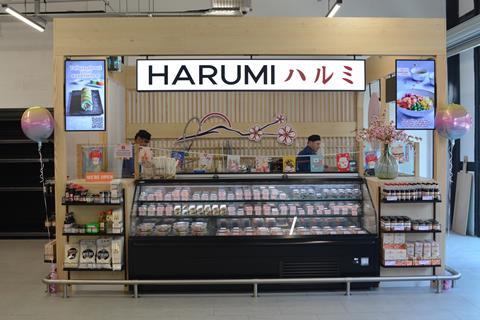
Longdan is experiencing a similar phenomenon. It’s branched out from its Vietnamese origins to stock products from all over east and south east Asia, and Huynh estimates its customers are now just 30% Asian, with the other 70% made up of various communities. “The vast majority of our customers are non-Asian,” he says. “People are more curious. I’ve had lots of customers say to me: ‘This looks interesting, but I don’t know how to use it. Can you help me?’”
The whole category is experiencing a huge shift. Back in the 1990s, Asian supermarkets mainly served the Chinese food industry, most of which was run by Cantonese people. The diaspora from other Asian countries occasionally carved out a pocket for itself – the Vietnamese in Hackney, for example – and small grocery stores tailored to their needs would follow.
According to renowned Chinese food expert Fuchsia Dunlop, one key demographic shift that has fuelled the new breed of Asian supermarket was a big change in the type of Chinese people shopping in them.
“There’s now a huge number of Chinese students in the UK compared to before, and they’ve brought with them their passions and desires from mainland China,” she says. “And quite a lot of them are fairly well off and sophisticated, so you’ve got stores like Tian Tian Market in London, which are much trendier and reflect contemporary young Chinese tastes.”
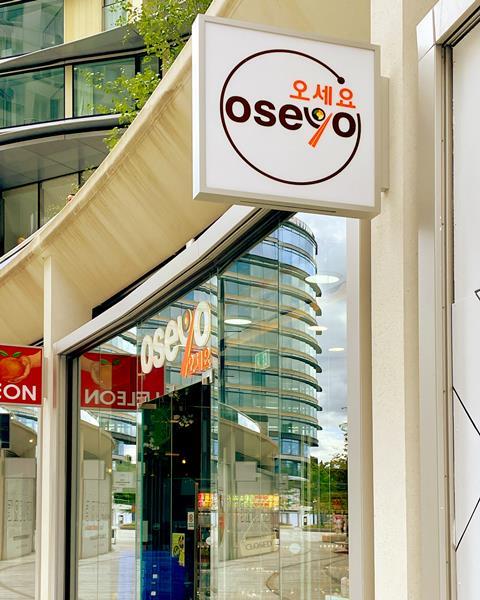
The role of technology
Technology has also played a huge part in demystifying the Asian supermarket. Previously, Dunlop notes, if “you didn’t speak Chinese or have a Chinese friend, it was really intimidating” to shop in an Asian supermarket, but now “it’s so much easier”. After all, customers can use their phones to scan Asian characters and get a near-instant translation, show photos to shop assistants, and find videos on how to use ingredients.
Which leads us to social media. It has “impacted massively”, says Huynh. “If you see your favourite influencer or foodie saying try this new item in an Asian supermarket, it brings in the curiosity factor. Influencer marketing has pretty much taken over in terms of introducing Asian products into society now.”
For Oseyo, the Korean trend has been “the number one reason” for the brand’s growth, according to Kweon. From TV and movies to pop music and beauty products, the ‘K Wave’ has swept the world. Although Kweon says it “doesn’t fully explain the rise of Asian supermarkets in the UK – it’s also changing tastes”.
Increased travel, and the concurrent rise of ‘food tourism’, means more westerners are now hankering after the dishes they tried overseas. “Asia is becoming more ‘seen’, and we give people the opportunity to cook with those ingredients at home,” says Kweon.
“Every month, Asian food becomes more and more mainstream. And now Nigella’s put gochujang in a pasta, so people hear about it”
The increased popularity of regional cookbooks is also playing its part, as is the embrace of popular British chefs. “Every month Asian food becomes more and more mainstream, as far as I can see,” says Dominique Woolf, the half-Thai author of cookbooks including The Asian Pantry.
“And now Nigella Lawson has put gochujang in a pasta. If you’re putting an ingredient like gochujang front and centre in one of Nigella’s recipes, people hear about it.”
Woolf also cites the rise in kitchen experimentation during lockdowns, an increased demand for authenticity, and the cost of living crisis as key. “People haven’t got as much money to go out for dinner all the time,” she adds. “So they try to recreate those restaurant meals and make ‘fakeaway’ dishes. Maybe they’ll spend a bit more money on those ingredients from that specialist shop, because it’s a treat, but it’s still cheaper than going out or getting a takeaway.”
The UPF debate in Asian food
While Asian retailers are expanding at pace, the UK’s growing awareness of the UPF debate could spell trouble for some of the brands and products stocked within them.
Numerous Asian products and ingredients are UPF – from obvious ones such as instant noodles to the likes of oyster sauce and even most coconut milks. Lao Gan Ma crispy chilli oil is a case in point. Its popularity is soaring in the UK, but its addictive umami kick comes at least partly thanks to ‘flavour enhancer E621’, which is listed before even salt, sugar and sichuan pepper powder on its ingredients list.
And now numerous alternative brands are popping up, many of them made in the UK and offering cleaner-label takes on Asian ingredients. Tom Palmer lived in China for 10 years before starting Yep Kitchen, which sells award-winning chilli oils and ferments.
“The growing trend against UPFs is a powerful cultural shift and will certainly impact innovation in the wider Asian category,” he says.
“At Yep Kitchen, we see this as an opportunity. We manufacture our products in the UK, importing only the key ingredients we need directly from Sichuan province. This gives us the best of both worlds. We respect the origins of our products and can create fresher, cleaner-label products.”
Dominique Woolf, cookbook author and founder of The Woolf’s Kitchen, which makes Asian chilli oils, sauces and pastes, says when developing her products she was “determined they’d be 100% natural and free from additives like MSG. My Chilli Crunch gets its umami flavour from shiitake mushroom powder, so there’s no need for artificial enhancers.”
Better layouts
UK retail sales of ‘Chinese and other oriental’ food topped £1bn in 2024, according to Mintel. Even so, Asian supermarkets are not resting on their laurels. As shopper demographics change, they’re keeping pace and changing, too. The first step has been modernising and opening physically larger stores. After all, Oseyo’s first store on Tottenham Court Road was 850 sq ft, and its latest openings can be in the tens of thousands.
“You really notice in London’s Chinatown, in the three long-established Chinese supermarkets – they’re just too small,” says Dunlop, whose most recent book is Invitation to a Banquet: The Story of Chinese Food. “They’ve got narrow aisles, they get very crowded. There are too many people. But if you go to Tian Tian Market in Aldgate, for example, it’s in a modern mixed-use development. It’s a very accessible space and quite simply a nice place to shop.”
Huynh says Longdan’s latest changes are focused on “making stores more modern” because “before, some of our layouts just didn’t make sense, but we’ve really homed in on what the customer path is for each store”.
Much of the reason for the increased square footage is quite simply extra demand. Customers “expect more” from an Asian supermarket these days, according to Huynh, meaning there’s a need to stock everything from food to cookware to toiletries. “We’re becoming a proper supermarket now,” he adds.
At Oseyo, it’s all about the experience. Larger shops mean wider aisles, which means a more comfortable shop, which means “people want to browse and spend time” in store, says Kweon. The brand has also “spent loads of time and money” on clear signage and labelling every product in English – a rarity in more traditional Asian stores. This means ingredients and allergens are easier for customers to spot, and Oseyo is also working with suppliers to include vegan or halal certification “to make sure we can have as wide a customer range as possible”, according to Kweon.
“Oseyo is essentially a British brand; a British brand that happens to sell Asian products is how we view ourselves”
“One of the differences with our brand is that our infrastructure is English, whereas if you go to those traditional brands, that entire infrastructure is Chinese. So, I think it starts from our very essence. Essentially, we’re a British brand; a British brand that happens to sell Asian products is how we view ourselves,” he adds.
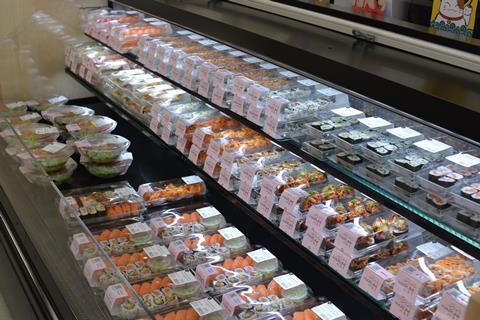
In-store theatre
At a time when most mainstream supermarkets provide a conspicuously utilitarian experience, the likes of Oseyo and Longdan are putting in-store theatre front and centre too.
At Oseyo, newer stores include a Korean-style photo booth called Oseyo Snaps where customers can make use of a dress-up area, pose with friends and buy the resultant photos. At the new Wimbledon store, the booth was designed to mimic a train carriage and was easily big enough to fit 10 people. Numerous Oseyo stores also offer Korean ice cup stations. Based around the viral drink, customers choose a cup of ice, a sachet of flavoured syrup such as grapefruit or Korean apricot, take it to a designated area and mix their own drink together.
Meanwhile, Oseyo’s Paddington store is designed to resemble a library. Huge shelves are filled with (empty) book covers sourced from Korea, while all ramen is displayed sideways rather than frontways, so it resembles books – the ‘ramen library’.
“We’re always thinking about what else we could do to bring in customers other than just be a supermarket – how to be an experience,” Kweon says. “And as we’ve grown, the ideas are getting bigger. We’re definitely spending more and more on every shop we open.
“It’s about making sure that if there’s a trend, we bring it in but then move on to the next one. That’s a very Asian mentality as well. And of course we’re a lot smaller, so we’re more mobile, and we can afford to be a bit more innovative. Whereas in Sainsbury’s, maybe it’s not so easy to experiment with a crazy idea.”
Oseyo’s expansion timeline
- Tottenham Court Road, London - October 2015
- Camden, London - August 2017
- Waterloo, London - January 2018
- Angel, London - August 2018
- Oxford Road, Manchester - January 2019
- Soho, London - April 2019
- Hammersmith, London - December 2021
- Cambridge - September 2022
- Kingston, London - October 2022
- Battersea Power Station, London - December 2022
- Guildford - January 2024
- Arndale Shopping Centre, Manchester - July 2024
- Paddington, London - November 2024
- London Bridge - November 2024
- Victoria, London - December 2024
- Wimbledon, London -April 2025
Opening in 2025
- New Street, Birmingham
- Notting Hill, London
- Liverpool Street Station, London
- The Moor Shopping Centre, Sheffield
The wow factor
Longdan is also beginning to experiment. As well as the 200-seater food court planned for Glasgow, earlier this month it opened its first fresh sushi kiosk at its Staines store, with Crawley to follow next. The latter already has a bubble tea concession.
“I thought, there’s something missing in these Asian supermarkets. And sushi makes the most sense,” says Huynh. “We’re changing to cater to our new audience. We’ve started with sushi, but we’re looking at other concessions as well – fresh bakery, maybe Korean kiosks.”
In addition to eye-catching innovations, Asian supermarkets can provide the wow factor through products alone, according to Woolf. During a recent trip by The Grocer to Longdan in Leyton, we spotted swamp eel chunks, bright orange chicken ovaries and much more.
“It’s a completely different beast, isn’t it? It’s an immersive experience,” Woolf says. “It sounds sad, but it feels like you’re going away. It’s like, you’re just on this high street and then suddenly you’re transported somewhere.”
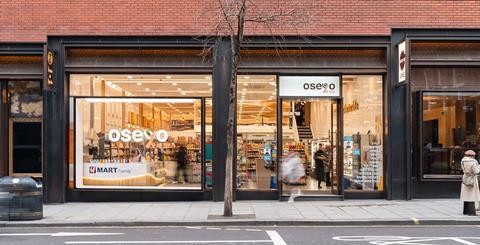
Oseyo and Longdan are also innovating in terms of tech. Longdan is currently training AI models to understand customers and building a chatbot for its website to answer FAQs and even suggest recipes. “We’re building a lot of AI models right now to enhance data,” says Huynh.
Oseyo is also investing heavily in tech, though Kweon cannot share details. “I think part of the [reason for the] rise of Asian supermarkets is we’re able to bring these innovative ideas from Asia quickly, whereas British supermarkets are a bit slower,” he says.
The big Asian supermarkets are also investing heavily in own-label ranges. Longdan has about 10 own-label and OEM brands. Longdan is also the name of its Vietnamese own-label brand, selling noodles, dried vermicelli, fish sauce and more; Harumi is its Japanese brand; Kim’s Kitchen is Korean; Madame Kim is the company’s Thai brand; Golden Lotus is focused on rice.
Oseyo also has 10 own brands. The main reason, according to Kweon, is because it gives Oseyo “more control” over the type of products it can sell. And this is especially important given its own-label products are made specifically for the UK market.
“A lot of Asian own brands will be generic for everyone. But we’re thinking: ‘What’s not in the UK that we think people want?’ And then we’ll make it and bring it in,” reveals Kweon. “We were the first to bring Korean corn dogs to the UK; that was own label. And now other Asian supermarkets are selling our brand – that’s another strength of doing own label.”
Oseyo is even beginning to branch out into south Asian ingredients and British products and brands – the Myprotein protein bars on sale in Wimbledon being a case in point. “At the end of the day, we’re an Asian supermarket, specifically a Korean supermarket,” says Kweon. “That doesn’t mean we can’t give more variety and choice to our customers. So, if we want them to buy a cookie or a protein bar, then why not?”
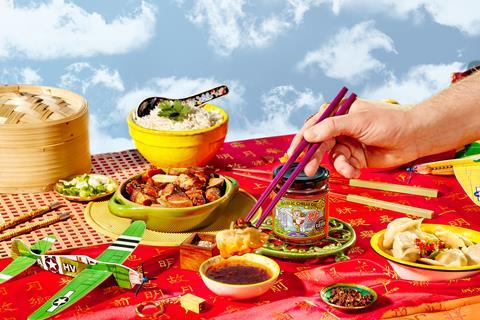
Pragmatism
There’s also a certain level of pragmatism behind Oseyo creating own-label products – it’s not allowed to import dairy or meat from Korea. This made it “incredibly difficult” to sell everything customers wanted, Kweon says. The answer has often been swapping dairy for soy, and meat for alt-meats, in own-brand products.
“We have two options,” he adds. “We’ll either make it own label and remove the dairy. Or we’ll go to a brand and say: ‘We want to bring your product in, but let’s remove the dairy.’ Funnily enough, by carrying out all this innovation to avoid import/export rules, we’ve created a whole range of goods that are vegan or vegetarian – which works with current trends anyway.”
Kweon hopes this mix of ingenuity, pragmatism and innovation will see Oseyo continue to thrive long after the brand opens its 20th store later this year.
“We’ll continue to innovate,” he says. “We’re always light on our feet, because that’s who we are. We’ve made people come to us because we’re interesting. What we don’t like is a copy-paste format. We know that’s cheaper, but all our shops will look a bit different. That’s what we’re all about: experimenting.”


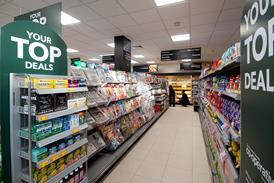
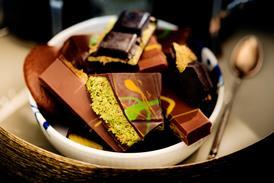

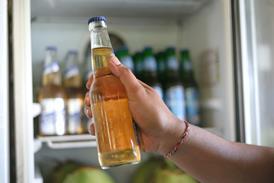


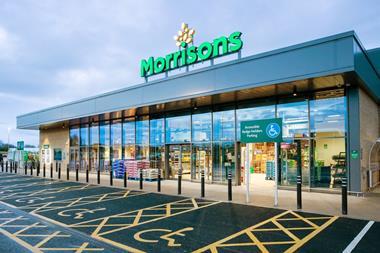

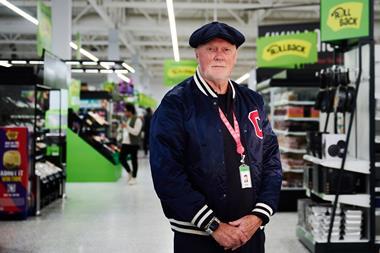
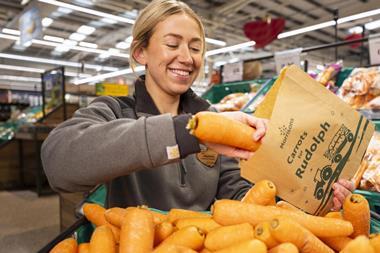


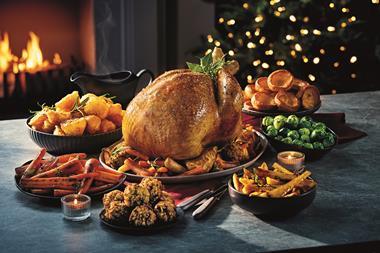



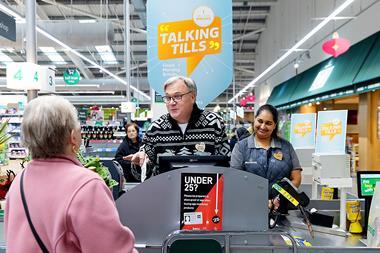

No comments yet